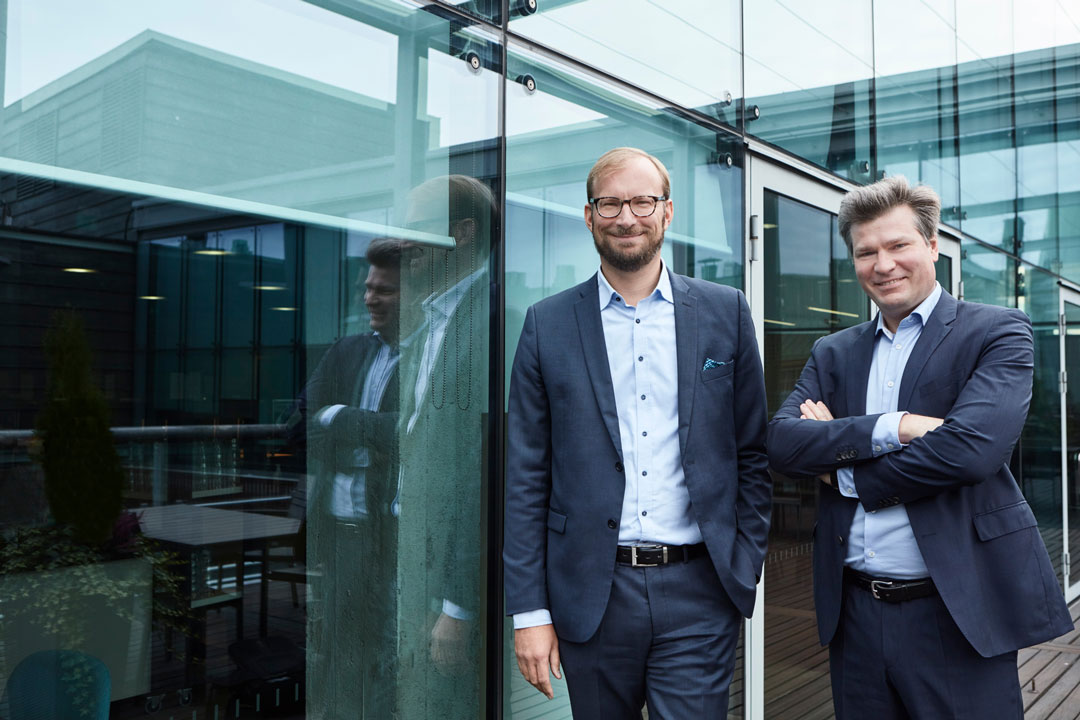
In the digital age, no business development can be made without the strong contribution and cooperation of the economy and ICT.
From a property tenant to a service organization
Senate Properties is a traditional public facility manager that has been in operations for more than 200 years. The example of CFO Mikko Ahola is the Old Academy Building in Turku, which was built by the state in the early 19th century and last renovated a couple of years ago to meet the current needs of the Turku Court of Appeal. Ahola and CIO Jussi Hirvelä say that the first 200 years of operation of Senate Properties have been traditional property ownership and leasing. Now the company is moving towards a service organization that sells business premises as a service. The change has affected many, not least financial and information management.
The Senate's activities consist of various functions, from construction projects to renting and maintenance, as well as a wide range of business premises services. Each has its own specific characteristics that set requirements for financial management – some examples are investment calculations, internal accounting and VAT calculation. In addition, the Senate has outsourced more than 90% of its work. Effective management of a supplier network employing more than 4,000 people is a prerequisite for success, and therefore up-to-date procurement information is needed.
Finance and IT supporting business
Senate Properties acquired a new financial management ERP system to support its changing operations. The acquisition and implementation were carried out carefully and in close cooperation between business, financial management and IT. "Digitalization has made it impossible for any business to develop without a strong contribution from Finance and IT," says Hirvelä, CIO. Reporting is absolutely key for him. The business doesn’t want to know what’s under the hood in reporting systems. Instead, the results and insight that the system can provide are valuable.
A lot of groundwork was done in the Senate before the ERP project. The definition was not based on the current situation, and e.g. the reporting structures were changed a lot. Changing operations also brought new demands. Different time perspectives are part of the management of operations, from the long-term maintenance of a historic building already mentioned to the monitoring of hourly energy consumption. The requirements for the IT systems are therefore tough.
According to Ahola, when starting an ERP project, it must be possible to change the processes so that customization to the system can be avoided. With a heavily customized ERP, its maintainability suffers. “We worked on the system definition for many months and tried not to speculate on 'how’ but rather on ‘what’ we want to achieve”. This created a common vision between the Senate and Efima for the project.
ERP project on schedule and on budget
“ERP projects are always risky projects, and there are many ways to fail,” says Hirvelä. “We put a lot of effort in preparing the tender and made sure that a decision will be made to reach the desired goal. We also paid a lot of attention to the CVs on the offers because companies don’t make systems but people do,” he continues.
The project was successful and completed on schedule and on budget. According to Hirvelä, the project was the best he has been involved in over the years. “We adhered to the schedule. When dealing with change requests, it was always asked if the issue would affect the schedule, because if the schedule is delayed, quality will also suffer and costs will increase. We were very pleased with the steering group – it was not just a rubber stamp, but took the pressure off the project by carefully reviewing change requests and making agile decisions.”
As always, there were bumps on the road along the way, but Ahola said the project team would always gather itself and keep its focus. The spirit of cooperation was great throughout the project.
Give the project resources and lead change
According to Efima, one of the main reasons for the success of the project was the Senate's strong commitment to its internal resourcing and change management. Hirvelä and Ahola are on the same line. "I said at the beginning that it's not worth going into this unless we resource the project properly," Hirvelä states. “We hired an excellent project manager and got an experienced financial management expert on a full-time basis on the project. It is wise to give people a chance to invest their time in the project. Of course, this is clear to us as we operate a project-based business, but it really is a prerequisite for success,” says Ahola.
Another area of focus was change management. Ahola says: “People might have been working with the old system for most of their careers, so it took a lot to get them involved in the change. We invested in training, and the project manager did a lot of 'outreach'. People were actively helping each other, and we also bought training and support from Efima. Our end-users are happy.”
A good partner challenges the norm
When Ahola and Hirvelä are asked what a good partnership is like, there is no need to wait for an answer. The Senate uses a lot of partners and they need to bring expertise to the table. Hirvelä says he will give each new partner a speech to challenge the norm. “We want to know what the partner would do differently. During our ERP project, we often asked Efima if a change request made sense, or if we would shoot ourselves in the leg if we required customizations. Along the way, we got a lot of help in developing our processes,” he concludes.
Could we help you too?
You can contact us via the form below.
